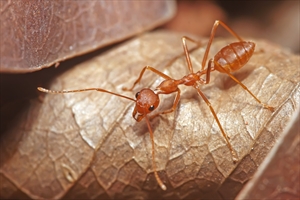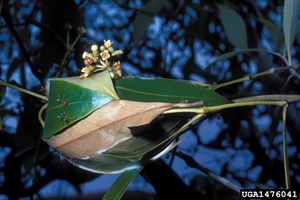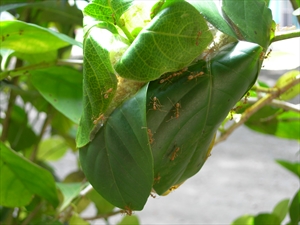- Restricted distribution. In Oceania, Australia, Papua New Guinea, and Solomon Islands. Prey includes sap-sucking bug, beetles, caterpillars, thrips, fruit flies on many crops of economic importance; tends aphids, mealybugs and scales for honeydew. Do not sting, but bite and spray formic acid. Move quickly and defend nests when distributed.
- Adults, yellow to reddish brown, build nests (usually in groups up to half million ants) in trees fastening leaves together. Queen in one nest, but eggs distributed to others. Workers are major (forage, defend) and minor (care for brood, collect honeydew).
- Biosecurity: A generalist, requiring an import risk analysis before considering importing this invasive ant.
- Management: in Vietnam farmers use ants in citrus, providing canes between trees to assist foraging; reports of good pest control in cashew, mango, and plantation trees (Australia), oranges (Africa). Control of pests of coconuts and cocoa (Papua New Guinea and Solomon Islands) less successful due to competition from other ants.








